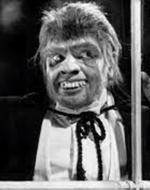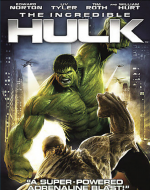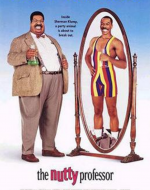Created by Jonathan Basey on Tue, 11/22/2022 - 23:14
Description:
I’ve chosen this gallery of images and annotations to convey that regardless of the director’s intentions, the use of Hyde is as a social commentary, representing whatever the director thought would most resonate as “evil” or “monstrous” to society at the time of each film’s creation. As you may recall from our classes on Dickens’ A Christmas Carol, most adaptations do some form of this, updating their themes and messages to comply with prevailing new thoughts. Hutcheon (2006) says that adaptation is a translation or interpretation of a source text. In trying to interpret or translate Hyde (notoriously undescribed throughout Stevenson’s book), each director must make a choice. How to represent Hyde as a monster?
Many directors, specifically Mamoulian, default to what Halberstam says in her section of The Norton Critical Edition of Stevenson’s text, Introduction to Gothic Monstrosity (2003, p. 129), “the monster must always fail to be monstrous enough and horror therefore depends on the explicit violation of female bodies as opposed to simply the sight of the monster.” I think this is true, the monster will always fail to be as monstrous as what the reader imagines. However, what I hope to prove is that the action taken does not necessarily have to be, as she says, “the explicit violation of female bodies”. Instead, the actions or images cementing Hyde’s monstrosity can be any action or image the director, or the society the director belongs to, finds monstrous. For Death Note, this was the death penalty. For Mamoulian’s Dr. Jekyll and Mr. Hyde it was the Lusty Ape-man. Marvel’s the Hulk comments on the US military and on human experimentation. And The Nutty Professor comments on toxic weight loss ads and social pressures. As each society has its own cultural views and those views are everchanging as we move through time, the ways that Mr. Hyde can be represented are even more numerous than the number of adaptations of Mr. Hyde.
Figure 1 "Death Note's Kira"| Araki, Tetsuru, director. “New World”, Death Note. Season 1 episode 37, Madhouse, 2007. (0:09:24)
To justify Kira as a Hyde, I have a short explanation. When the police come close to discovering that Kira is Light Yagami, Kira voluntarily retreats back into Light Yagami to hide (by temporarily giving up his memories of the Death Note), much like in Stevenson’s novel (1886) when, after murdering Carew, Hyde cedes control back to Jekyll to avoid the newly present danger. The now-memoryless Light Yagami takes a hard, antagonistic stance towards Kira’s actions and works with the police to find and bring justice to him, up until the Death Note (and his memories) are returned, turning him back into Kira.
Unlike other Hydes, Kira commits no direct violence on other people. Instead, he kills only indirectly, using the Death Note. This functions as a commentary on the death penalty. His “transformation moment” comes when he receives the Death Note, the power to kill “the deserving”, representing a sort of instant corruption they theorize that the power to kill creates. Kira is shown to be evil, or “monstrous”, primarily through his actions. Kira, with his great sense of “justice”, takes it upon himself to be the death penalty, at first for only the particularly awful crimes. As Kira keeps killing however, he becomes more and more evil, first expanding to lesser crimes, then simply to anyone who threatens his continued killing.
Rather than transforming into something atavistic or monstrous, Kira is drawn as relatively normal to better show the idea that those with the power to kill are just ordinary humans. The biggest visual clues toward his evil are in the shading and coloring changes that differentiate both from when he is Light and from when he is pretending to be Light. Kira’s eyes (and sometimes his hair) turn a glowing red and he is placed within shadows. As his actions grow worse, the shadows and the red coloring become more numerous. Additionally, his expressions become mocking and condescending, particularly for his villainous laugh, shown above.
Figure 2 "Mamoulian's Hyde" | Mamoulian, Rouben, director. “Dr. Jekyll and Mr. Hyde.” Paramount Pictures, 1931. (1:29:15)
This Hyde exemplifies the “social commentary” that Hyde is typically used as, in a bad way. The 1930s were rife with examples of what Metzler refers to as the “Lusty Ape-man” trope. As she says, “[The] violent ape comes to stand in for a specific discourse about race
occurring at that time.” (2012, p. 32) Hyde in this film is no different, showing a profoundly racist version of the atavism present in Hyde’s description in Stevenson’s novel. He is supposed to represent a dangerous foreign other, imperiling white womanhood.
This film takes advantage of social tensions, specifically racism, to make a social commentary (whether intentionally or just to make a quick buck) in a negative light. You can see it clearly just from the visual: the actor is wearing blackface, with animal-like fur and teeth, and in this scene is specifically looking at the wealthy, white, upper-class woman that Jekyll fancies with lust in his eyes. The grin serves to both accentuate his animal features (large canines) and give the audience the clear idea that he is about to do something terrible. Hyde is also the only character to even represent a person of color, making the commentary even more obvious.
Figure 3 "Marvel's The Hulk" | Letterier, Louis, director. The Incredible Hulk. Marvel Studios, 2008.
Marvel’s The Hulk is an interesting Hyde in that he is portrayed heroically. Despite this, however, he is still nearly as monstrous as his enemy. He is large and green with his hands balled into fists, in the middle of a primal yell. His enemy is not just Abomination (the monster at the bottom of the picture), but the US military as well (shown by the helicopters with search lights).
This movie has two big social commentaries. The first is the US military are bad guys (a staple of the sci-fi genre) and the second is against human genetic experimentation (also a staple of the sci-fi genre). Hulk simultaneously prtrays the negatives of the military and the negatives of genetic experimentation. In regard to the military, Hulk is destructive, and asks no questions, causing extreme levels of collateral damage. Given that this was filmed in 2008, it is likely that that in itself is some commentary on the war in the Middle East specifically. The idea of scientfic experimentation to make one better is straight out of the original book by Stevenson (1886). Rather than making himself morally better, however, Bruce Banner sought to make himself physically better - stronger, tougher, and faster.
Figure 4 "The Nutty Professor (1996)'s Buddy Love" | Shadyac, Tom, director. The Nutty Professor. Imagine Entertainment, 1996.
Here, the Nutty Professor’s Hyde, Buddy Love, is shown in a mirror opposite his counterpart (Sherman Klump). in a way that parodies the representation of looking in a mirror and seeing what you want to look like. From context we can assume that the moments being shown are the moment just before (on the left) and just after (on the right) “Jekyll” drinks his formula. In addition to conveying a psychological effect, I think that the mirror in this cover is a parody of weight loss ads. The mirror is also an important focal point in the Richard Mansfield play (1887). Jekyll looks at the mirror to ascertain whether he is Jekyll or Hyde, much like Sherman looks in the mirror to ascertain whether he’s lost weight.
While I think the film fails at truly conveying its message, undercut by the comedic nature of the film, it is very clear that the intended takeaway is twofold: first, that weight loss drugs either don’t work or have side effects, and second to be happy in the body and self that you have. Within this message, Buddy’s role as Hyde’s social commentary is in portraying a toxic influence, rather than a violent, evil person (despite the many acts of nearly cartoonish violence he commits). Buddy insists that Klump is nothing, that unless he loses that weight and acts like Buddy does (erasing himself), he’ll never be anything. In this way, “Hyde” is a social commentary against the societal influences telling “Jekyll” that because he’s fat, he’ll never be good enough.
Works Cited
Araki, Tetsuru, director. “New World”, Death Note. Season 1 episode 37, Madhouse, 2007. (0:09:24)
Hutcheon, Linda. “A Theory of Adaptation.” 2006, https://doi.org/10.4324/9780203957721.
Letterier, Louis, director. The Incredible Hulk. Marvel Studios, 2008.
Mamoulian, Rouben, director. “Dr. Jekyll and Mr. Hyde.” Paramount Pictures, 1931. (1:29:15)
Mansfield, Richard, et al. The Stage Version of Dr. Jekyll and Mr. Hyde. 1887.
Metzler, Jessica. “Lusty Ape-Men and Imperiled White Womanhood.” Adapting Poe, https://doi.org/10.1057/9781137041982.0006.
Shadyac, Tom, director. The Nutty Professor. Imagine Entertainment, 1996.
Stevenson, Robert Louis. The Strange Case of Dr. Jekyll & Mr. Hyde. Lovell, 1886.
Stevenson, Robert Louis. Strange Case of Dr. Jekyll and Mr. Hyde. Ed. Katherine Lineham. New York: W.W. Norton & Co., 2003





